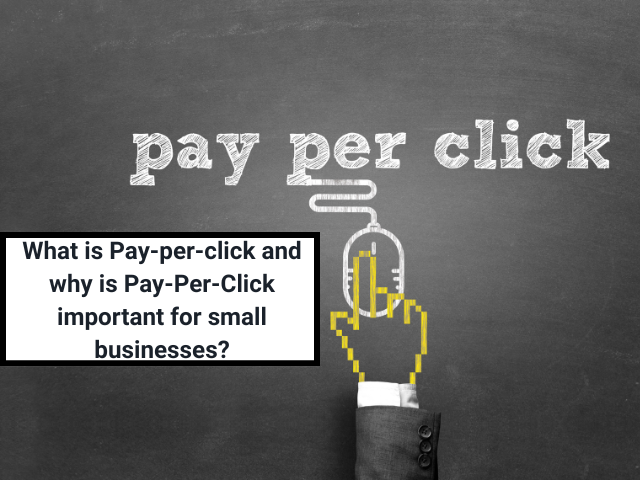What is Affiliate marketing and its most significant benefits?
What is Affiliate marketing and its most significant benefits? Affiliate marketing is a popular online marketing strategy where individuals or businesses earn a commission by promoting and selling products or services on behalf of another company. It serves as a win-win situation for both the affiliate marketer and the company, as it allows for increased brand exposure, expanded customer reach, and potential revenue generation. The affiliate marketing process typically involves three key parties: the advertiser (or merchant), the affiliate (or publisher), and the consumer. The advertiser is the company or brand that owns the product or service and wishes to promote it. The affiliate is the marketer who promotes the product or service through various channels. The consumer is the target audience who purchases the product or service through the affiliate’s referral. To get started in affiliate marketing, individuals or businesses can join affiliate programs or networks. These platforms connect advertisers with potential affiliates and provide the necessary tools and resources to track sales, manage commissions, and facilitate payments. Common affiliate networks include Amazon Associates, ClickBank, ShareASale, and Commission Junction. Once enrolled in an affiliate program, affiliates receive unique affiliate links or banners to embed in their marketing materials. These links contain tracking codes that identify the affiliate responsible for referring the customer. Affiliates then promote the products or services through their websites, blogs, social media channels, email marketing, or other online platforms. When a consumer clicks on the affiliate link and completes a purchase, the affiliate receives a commission as compensation. Commissions can be based on various models, such as a percentage of the sale, a fixed amount per sale, or a combination of both. The specific commission structure is typically determined by the advertiser and outlined in the affiliate program terms. Affiliate marketers who achieve success utilize a range of tactics to optimize their earnings. They focus on selecting niche products or services that align with their target audience’s interests and needs. They create compelling content, including product reviews, tutorials, comparison guides, and promotional offers, to engage their audience and drive conversions. Establishing trust and cultivating a loyal audience are essential components for achieving sustained success over time in affiliate marketing. Additionally, affiliates leverage search engine optimization (SEO) techniques to improve their website’s visibility in search engine results, driving organic traffic to their affiliate links. They may also utilize paid advertising, such as pay-per-click (PPC) campaigns, to generate targeted traffic and increase their chances of earning commissions. While affiliate marketing offers potential opportunities for passive income and flexibility, it requires dedication, strategic planning, and continuous optimization. Successful affiliates constantly analyze their performance, track conversion rates, and adapt their marketing strategies accordingly. They also stay updated on industry trends, new product launches, and changes in consumer behavior to capitalize on emerging opportunities. Top 10 benefits of affiliate marketing? Affiliate marketing provides plenty of advantages for both advertisers and affiliates. Here are the top 10 benefits of affiliate marketing: 1. Increased Sales and Revenue: Affiliate marketing can significantly boost sales for advertisers. Businesses can access untapped customer segments and create supplementary streams of revenue through harnessing the influence and expansive reach of affiliates. 2. Cost-Effective Marketing: Affiliate marketing is a performance-based model, meaning advertisers only pay commissions when a desired action, such as a sale or lead, is achieved. This results in a cost-effective marketing strategy with a measurable return on investment. 3. Broadened Audience Reach: Affiliates have their own established audience and online platforms. By partnering with affiliates, advertisers can extend their reach to new markets and demographics they may not have been able to target otherwise. 4. Targeted and Relevant Traffic: Affiliates often specialize in specific niches or industries. This specialization enables advertisers to access highly targeted and relevant traffic, increasing the likelihood of conversions and customer engagement. 5. Improved SEO and Website Traffic: Affiliate marketing can contribute to better search engine rankings and increased organic website traffic. When affiliates link back to the advertiser’s website, it can enhance SEO efforts and attract more visitors. 6. Enhanced Brand Awareness: Affiliates actively promote products or services, increasing brand visibility and awareness. This exposure helps build brand recognition and credibility among the affiliate’s audience. 7. Diversified Marketing Channels: Affiliate marketing leverages a wide range of marketing channels, including websites, blogs, social media, email marketing, and more. This diversification allows advertisers to reach customers through various touchpoints, increasing the chances of conversion. VIII. The Role in Modern Development: Affiliate marketing facilitates customer acquisition without the need for extensive in-house marketing efforts. Affiliates serve as valuable partners who drive traffic and acquire customers on behalf of the advertiser, saving time and resources. 9. Performance Tracking and Optimization: Affiliate marketing provides valuable data and insights that allow advertisers to track affiliate performance, measure campaign effectiveness, and make data-driven optimizations. This enables continuous improvement and better ROI. 10. Strategic Partnerships and Brand Advocacy: Building strong relationships with affiliates can lead to long-term partnerships and brand advocacy. Affiliates who genuinely believe in the advertiser’s products or services can become passionate brand ambassadors, driving sustained growth and customer loyalty. Conclusion Affiliate marketing presents a mutually beneficial arrangement, where advertisers gain wider exposure and increased sales, while affiliates earn commissions for their promotional efforts. With its cost-effectiveness, performance-driven nature, and ability to leverage diverse marketing channels, affiliate marketing has become an essential strategy for businesses to grow their online presence and generate revenue. Ready to get started learning What is Affiliate marketing and its most significant benefits? Register for a free demo Get more details regarding Powerpoint Phone no. 9988-500-936 Address SCF 22, First floor, GTB Market, Khanna Website www.microwavecomputer.com Add Your Heading Text Here Opening Hours 08:30 am – 06:00 pm What is Affiliate marketing and its most significant benefits? Is Java still a good language? Do people still use C language? An ultimate guide on Python: Why Learn Python? 10 Reasons to Start Programming With Python What is MS Excel and how important is excel for businesses? Leave a Reply Cancel Reply Logged in as …
What is Affiliate marketing and its most significant benefits? Read More »




